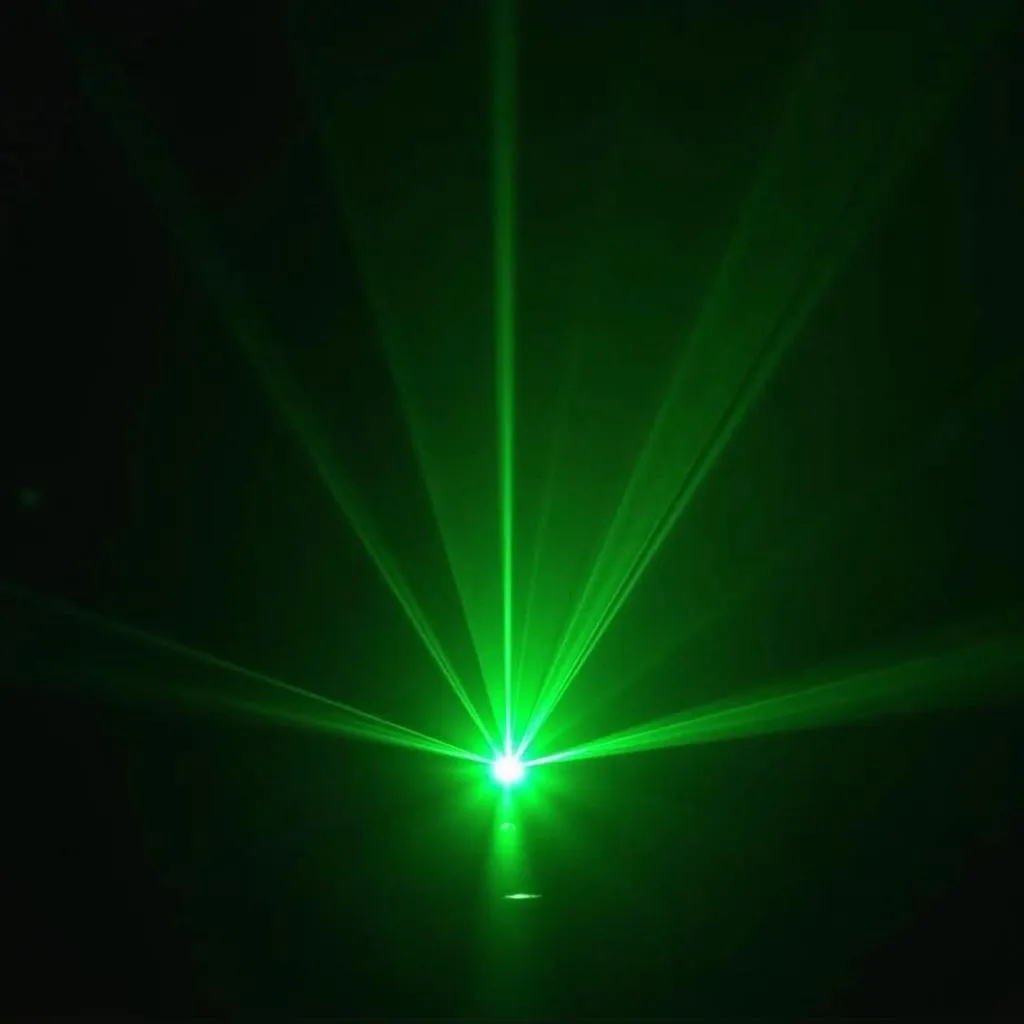When it comes to laser technology, the color of the laser beam isn’t just about aesthetics – it directly correlates to its wavelength, which significantly impacts its power and applications. So, you might be surprised to learn that the answer isn’t as simple as pointing to a single color on the spectrum.
Let’s delve into the fascinating world of lasers to understand how color influences their strength and explore the factors that determine which color laser reigns supreme in different scenarios.
Unraveling the Relationship Between Color and Laser Strength
The color of a laser is determined by its wavelength, which is the distance between two consecutive peaks or troughs of a wave. This seemingly simple characteristic plays a crucial role in defining the laser’s energy level.
 Laser Wavelength Spectrum
Laser Wavelength Spectrum
Shorter wavelengths, such as those in the blue and violet spectrum, possess higher energy photons. Conversely, longer wavelengths like those found in the red and infrared regions have lower energy photons. This fundamental principle of physics governs the strength of a laser beam.
Green Lasers: High Visibility, Moderate Power
Green lasers, with a wavelength of around 532 nanometers, are often perceived as strong due to their exceptional visibility to the human eye. Our eyes are highly sensitive to green light, making these lasers appear much brighter than other colors at the same power output.
 Green Laser Beam Visibility
Green Laser Beam Visibility
However, while green lasers excel in applications requiring high visibility, such as laser pointers, surveying equipment, and entertainment displays, they might not necessarily be the most powerful option.
Blue Lasers: Packing a Punch in a Small Package
Blue lasers, operating at a shorter wavelength of around 445 nanometers, deliver more energy per photon compared to their green counterparts. This makes them well-suited for applications where concentrated power is crucial, like:
- Data storage: Blu-ray Disc technology utilizes blue lasers for their ability to read and write data at higher densities.
- Laser printing: Blue lasers enable faster printing speeds and sharper image resolution.
- Medical treatments: Blue lasers are employed in various medical procedures, including dermatology and ophthalmology.
However, the higher energy of blue lasers also means they can pose greater safety risks and require careful handling.
Beyond the Visible: Exploring the Power of Invisible Lasers
While we’ve explored the strength of lasers within the visible spectrum, it’s important to note that some of the most powerful lasers emit light invisible to the naked eye.
Infrared lasers, with wavelengths longer than red light, are widely used in applications like telecommunications, fiber optic cables, and laser cutting. These lasers can achieve extremely high power outputs, making them suitable for industrial and scientific purposes.
Ultraviolet (UV) lasers, on the other end of the spectrum, possess even shorter wavelengths and higher energy levels. They find applications in areas like:
- Laser engraving: UV lasers can create precise and intricate markings on various materials.
- Medical diagnostics: UV lasers are used in fluorescence microscopy and DNA sequencing.
- Semiconductor manufacturing: These lasers are employed in photolithography processes for creating microchips.
Factors Influencing Laser Strength Beyond Color
While color plays a significant role in determining laser strength, other factors contribute to their overall power:
- Output Power: Measured in milliwatts (mW) or watts (W), this directly indicates the energy emitted by the laser.
- Beam Diameter: A narrower beam concentrates the laser’s energy into a smaller area, increasing its intensity.
- Pulse Duration: Pulsed lasers emit light in short bursts, which can significantly increase their peak power compared to continuous wave lasers.
The Verdict: It Depends on the Application
So, returning to our initial question: What Color Laser Is The Strongest? There isn’t a one-size-fits-all answer. The “strongest” laser depends entirely on the intended application and the specific parameters required.
If visibility is paramount, green lasers are an excellent choice. For tasks demanding concentrated power, blue lasers excel. And when it comes to sheer power output, infrared and ultraviolet lasers take the lead.
Ultimately, the key is to select the right laser for the job, considering its color, output power, and other relevant factors. If you need help determining the best laser for your specific needs, feel free to reach out to our team of experts at 0373298888 or [email protected]. You can also visit us at 86 Cầu Giấy, Hà Nội. We offer 24/7 customer support to assist you with all your laser-related inquiries.

